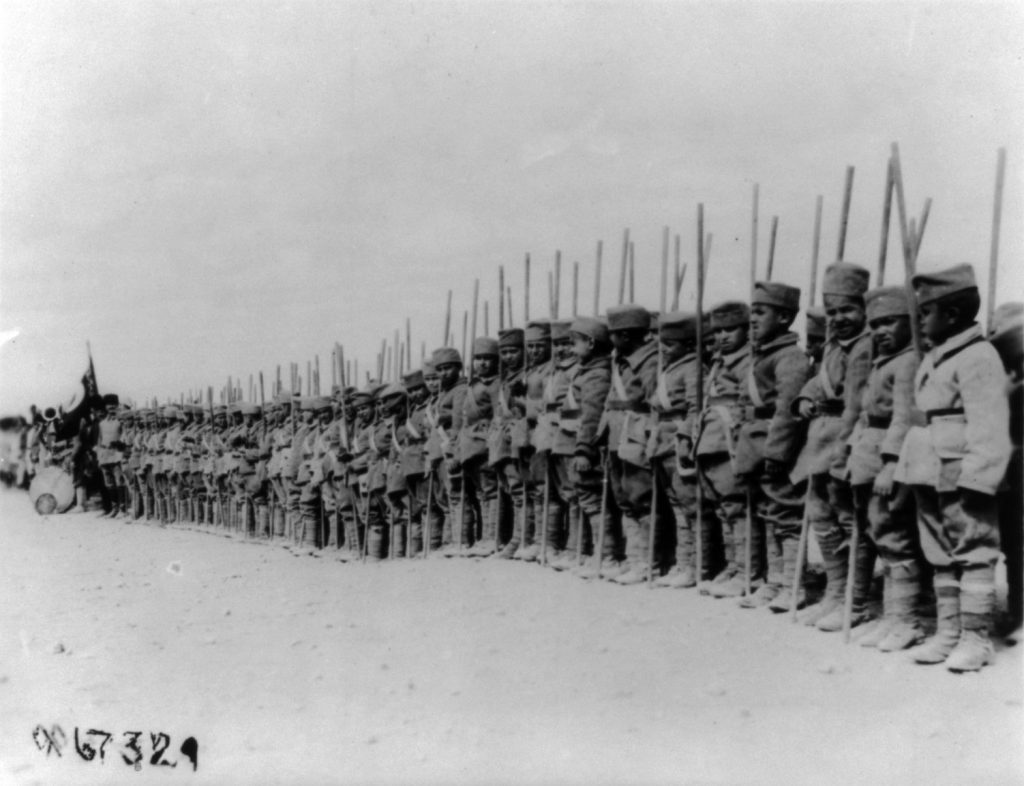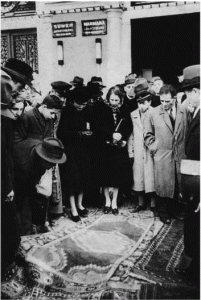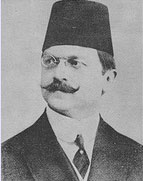Special to the Armenian Weekly

Armenian boys who were orphaned due to the Armenian Genocide were conscripted into the Turkish army by Kazim Karabekir to fight against Armenia during the Turkish-Armenian War of 1920. This photograph was taken during the American Military Mission to Armenia (1919) led by General James G. Harbord (Photo: U.S. Library of Congress/Public Domain)
Last month, the Turkish government released a website where Turkish citizens can look up their ancestral roots all the way back until the mid-1850s. There are hundreds of stories in printed and social media, which sent shockwaves in Turkey and beyond, about several Turks who discovered that they had Albanian, Arabic, Pontic Greek, and—worst of all—Armenian roots. There have even been reports that some members of an ultra-nationalistic and racist Turkish party were ostracized and thrown out of their ranks, went into depression, and even committed suicide upon discovering their Armenian family roots.
Whether these stories are true or exaggerated, the subject of one’s roots is critical—and in some cases, deadly— in Turkey. The late Hrant Dink was continuously persecuted, prosecuted for “insulting Turkishness,” and eventually assassinated after revealing that Kemal Ataturk’s adopted daughter and first female military pilot in Turkey, Sabiha Gökçen, was in fact an Armenian girl orphaned during the Armenian Genocide. In another case, a former President of Turkey had sued an opposition Member of Parliament for “accusing and insulting” him by stating that “he came from an Armenian family in Kayseri.”
And yet, in a country where calling someone Armenian is the biggest insult, there are numerous documented and undocumented stories about prominent Turks having Armenian roots, including a past president, another former president’s wife, and several opposition politicians. In one of the documented stories, the family of a past opposition leader—an ultra-nationalistic Turk—was actually converted to Islam from an Armenian family in the Black sea region, whose Armenian descendants now live in Canada.
When this official genealogy website was made public, I immediately wondered how the hidden Armenians’ (Armenians and their descendants, who were forced to convert during the Armenian Genocide) roots were recorded and a quick survey revealed that absolutely none of them were recorded as Armenian. Their family history started only with their adopted Muslim Turkish names. Although there is past evidence that the government kept detailed records of converted Armenians among Turks and Kurds, these records are not made public and are not revealed in this new website. Interestingly, it became evident that many Armenians killed, lost, and deported during the genocide are still marked as being “alive” on the website. Many Armenian families who knew the tragic fate of their grandmothers or grandfathers born all the way back in 1850s, are now finding out that these people are still miraculously alive, according to the doctored records of the website.
I wish here, to relate two interesting—and little known—stories of roots.
A weathly Armenian family lived in a village of Malatya in the 1880s. The region was terrorized and harassed by Kurdish tribesmen, who regularly raided Armenian villages. Eventually, Armenians started organizing defense forces by banding together fedayees (freedom fighters) to protect the Armenian villages. An Armenian fedayee leader once approached the head of this wealthy Armenian family and asked for money to buy weapons and horses. The wealthy Armenian said that he would decide in two days whether to comply with this request or not. After two days, the fedayee returned and the wealthy Armenian refused to give any money. The fedayee promptly shoots the man. The widow of the killed Armenian man fled with her newborn son to Izmir, where she converted to Islam and raised her son with utter hatred toward Armenians. That boy grew up to be Ismet İnönü (1884-1973), the second President of Turkey after Kemal Ataturk—and perhaps one of the worst enemy of the Armenians and other minorities in Turkey, after the Ittihadist (Young Turk) leaders.

(Seated L to R) Franklin D. Roosevelt, İnönü, and Winston Churchill at the Second Cairo Conference in Dec. 1943 (Photo: U.S. Library of Congress/Public Domain)

In the days of the Varlik Vergisi (Wealth Tax) of 1942, non-Muslims were forced to sell off their possessions to pay the exuberant taxes imposed on them
İnönü brought forth legislation called the “Wealth Tax” in 1942 (Varlik Vergisi), ostensibly to help Turkey cope with the war economy, but with the intent of ruining the minorities. The taxes were assessed based on ethnic origin—the level of taxation with respect to total capital was 232 percent for the Armenians, 184 percent for the Jews, 159 percent for the Greeks, and only a mere 4.9 percent for the Turks. The payment deadline was 15 days and anyone who could not pay was arrested and sent to the eastern provinces to work as laborers in stone quarries, building roads or tunnels. This was, in effect, a wealth transfer from the minorities to the Turks.
Many Armenians, after selling all their assets at dirt cheap prices, went bankrupt and still could not raise the required amounts and ended up at labor camps and dying there. In 1964, İnönü further oppressed the Greeks, when he deported 45,000 of them who had dual Greek and Turkish citizenship during the Cyprus crisis. They were given ten days to leave behind all their properties, assets, and belongings to leave the country with the allowed $20 and 20 kg (45 lbs) of possessions. The story of Ismet İnönü’s Armenian roots was corroborated by prominent historian Prof. Pars Tuglaci (Parsegh Tuglaciyan) (1933-2016), a family friend of İnönü.
Ali Kemal was a prominent liberal Ottoman journalist and editor of the Ikdam newspaper in the 1910s. He was also a member of the opposition Liberal Union (Itilaf) party and severe critic of the ruling Ittihad Terakki party. He fiercely criticizes the ruling party for entering the war, and for committing “war crimes and massacres” against its own Armenian citizens. His editorials and brilliant political speeches defending the Armenians are so vehement, that the pro-Ittihadist media dubbed him “Artin Kemal” (Artin is an Armenian name, short for Harutiun).
After the war, when Ottoman Turkey was defeated and the Ittihadist leaders fled the country, the Sultan appointed a new government and Kemal briefly became Minister of Interior. Kemal relentlessly demanded prosecution and punishment of the Ittihadist leaders. While he continued his attacks on the Ittihad leaders and defends the Armenians’ rights, he decided to send his British wife and children to England for safety. Unfortunately, the tide turned against Kemal when the resistance started by Kemal Ataturk in Ankara gained power and swept the Sultan and the Istanbul government away. Kemal got caught in the barber shop of Tokatliyan Hotel in Istanbul . While being taken to Ankara for trial, one of Ataturk’s commanders, “Red” Nureddin Pasha (dubbed “Red” for his red beard as well as his bloody cruelty) ordered his soldiers to lynch Kemal who was torn apart limb by limb while still alive.
Kemal’s family settled in Britain and his great grandson eventually became the Mayor of London, and current Foreign Minister of Great Britain, Boris Johnson. As a master diplomat, Johnson continuously tells Turkish President Erdogan that UK will do everything possible to get Turkey into the European Union, but at the same time, advocates Brexit by arguing that if Turkey enters EU, Britain would be flooded by Turkish immigrants.
If it weren’t for stories of tragic roots, politics would be fun.
The post Armenian Turks and Other Tragic Stories of Roots appeared first on The Armenian Weekly.
Source: Armenian Weekly
Link: Armenian Turks and Other Tragic Stories of Roots

